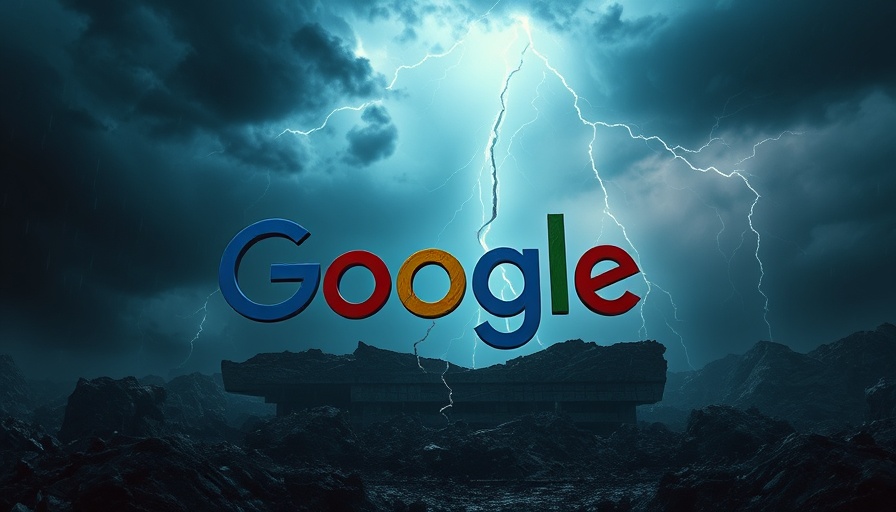
Is Google Losing Its Relevance in a Fast-Paced Digital World?
For decades, Google has been a stalwart of the digital landscape, serving as the primary means by which people navigate the internet. Yet, recent trends indicate that the search engine's dominance may be waning. Increasingly, users are becoming disenchanted with Google Search, primarily due to the overwhelming presence of ads and an unsatisfactory shift towards AI-generated results.
The Rise of Ad Overload: A Frustration for Users
The realm of search has transformed dramatically over the years. Once known for its simple and effective interface, Google has seemingly morphed into a cluttered platform filled with ads. Imagine walking through Times Square, inundated by flashy billboards competing for your attention, where meaningful content is hidden beneath an avalanche of advertisements.
A recent report indicated a significant decline in both organic and paid click-through rates on Google, highlighting users' frustration. As ads increasingly dominate SERPs (Search Engine Results Pages), the distinction between organic and paid content becomes obscured, pushing authentic results out of sight.
Organic Searches: A Dying Metric?
Historically, Google's commitment to relevant search results has set it apart from competitors. However, newer studies illustrate a grim reality: organic click rates are dwindling. For example, a recent analysis revealed that for every 1,000 Google searches in the U.S., only about 374 clicks lead to websites. In contrast, searches resulting in “zero-clicks,” or answers provided directly on the results page, are rapidly becoming the norm.
This trend creates challenges for businesses reliant on organic traffic, combining them with the pressure of SEO arms races—where providing valuable content often takes a backseat to paid promotions.
Generative Search: A New Threat to Traditional Browsing
Adding to the confusion is the rise of generative AI, which has begun redefining search engines and eroding traditional browsing behaviors. Now, users can find answers without visiting websites, further jeopardizing traffic for domain owners. This shift not only alters user behavior but also forces brands to rethink their marketing strategies if they wish to survive in Google's evolving ecosystem.
Long-Term Implications for Brands and Content Creators
The implications of these findings are far-reaching. Brands that have heavily relied on Google for visibility may need to rethink their digital marketing strategies. The focus could shift towards enhancing brand visibility within AI features that Google employs, rather than strictly adhering to traditional SEO practices.
Moreover, content creators face the looming threat of diminished organic reach, putting pressure on them to diversify their traffic sources—perhaps through engaging social media platforms or direct newsletters—to establish more personal relationships with their audiences.
Advising Franchisors: How to Navigate This Storm
For franchisors seeking operational efficiency and enhanced performance, understanding these shifts in search engine behavior is crucial. It is essential to maintain brand consistency while exploring alternative ways to connect with potential customers. Consider diversifying your marketing efforts beyond Google and exploring platforms that promise more organic reach.
In this fast-evolving landscape, adaptability and innovation will be the keys to success. As a franchisor, you're positioned to leverage the changing dynamics and create a marketing strategy that aligns with modern user behaviors and preferences.
Conclusion: A Call to Adapt and Innovate
As Google continues to evolve, it’s time for franchisors and businesses to rethink their strategies. Exploring new tools and platforms appears essential for maintaining brand presence and operational efficiency. Embrace the changes, adapt your tactics, and you may find new avenues for growth.
Ready to optimize your brand strategy in this new digital environment? Connect with industry experts to chart your way forward. The future is bright for those who adapt!
 Add Row
Add Row  Add
Add 




Write A Comment